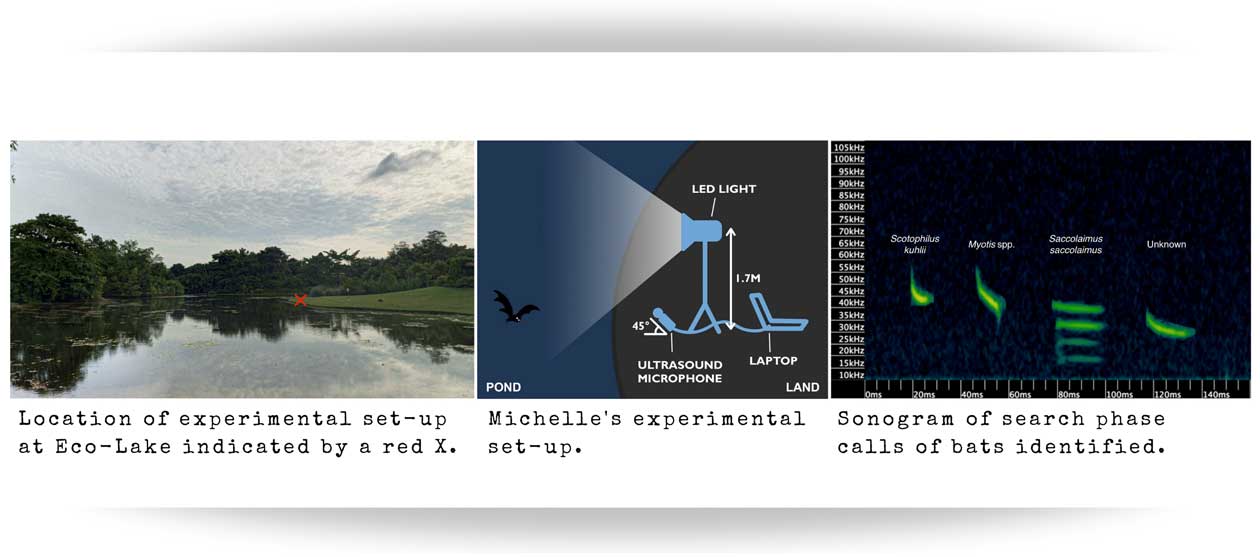Michelle GAN Wan Jie, Bachelor of Environmental Studies student – AY 2016/17
The effect of artificial light on bats at water
In 2015/16, my student, Jacqueline, studied the impacts of the annual haze on bats at a water body. But not quite by design. In fact, her intention was to investigate the impacts of artificial light – a study that was thwarted by the exceptionally poor air quality that year.
When Michelle joined my lab, she set out to study the problem of bird-building collisions but for various reasons, that did not work out as planned. She therefore took up where Jacqueline left off.
For some context, realise that Singapore (SG) is the most light-polluted nation on Earth. It is also very water scarce, with no naturally occurring lakes or ponds. Thus, anthropogenic, permanent water bodies should represent vital microhabitats to bats, which come to drink and hunt insects and (to a lesser extent) fish. SG Botanic Gardens has an artificial pond – Eco-Lake – that is normally quite dark and relatively quiet at night – a great locale for Michelle to address two hypotheses.
- Artificial light has a negative effect on the abundance and diversity of bats, due to avoidance by light-averse species.
- Artificial light positively affects foraging activity by bats known to hunt at streetlights and negatively affects that of bats that do not.
Over three months, Michelle did an experiment that consisted of alternating treatment nights (when she illuminated the area over the pond with LED lights) and controls (dark conditions). She recorded bats on a full-spectrum bat detector for one hour after sunset. Over 30 nights, she recorded a total of 15 148 bat passes (sequences of at least two echolocation calls by one individual no more than one second apart) and 11 534 feeding buzzes (stereotypical sequences of calls increasingly close together emitted at the terminal phase of prey capture). That’s a lot of data to look at, and Michelle identified all these passes and buzzes to species, where possible.

She found no statistical support for hypotheses (although she did observe a general tendency for activity to decline on treatment nights and foraging activity of all species except Myotis bats to increase). However, she did observe a temporal shift in activity. More specifically, foraging (i.e., feeding buzzes) of lesser Asiatic yellow bats (Scotophilus kuhlii) peaked later on treatment nights. Now, it’s worth noting that every feeding buzz (as recorded by a bat detector) is not necessarily a successful attack, but this finding suggests increased foraging effort, especially when you consider that she documented no increase in bat passes (i.e., an index of abundance). What’s not known is whether S. kuhlii is exploiting insects that are attracted to the light in the second half hour after sunset, when it’s darker, or its hunting success (proportion of attacks that end in capture) is declining.
When considering why she found no support for her hypotheses, Michelle suggested that perhaps the LED lights she used don’t have the same effects on bats as the sodium-vapour lights that have dominated urban street lighting for decades and that have been the focus of most studies of bats and artificial lights. For this reason, she suggested comparing the impacts of both types of lights, thereby sparking research by two of her successors (Kenneth and XinYi).
Michelle is a Conservation Programme Executive with WWF.
